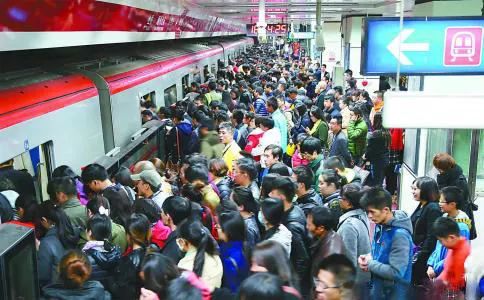No. 13 Brownbag

Topic: An Empirical Study on the Spatial Distribution Structure of Urban Population in China and Its Influencing Factors
Speaker: Xuxin Zou , Doctoral candidate of Renmin University of China
Host: Yexin Zhou , Associate Professor of the School of Economics and Resource Management, BNU
Time: 12:00-13:30pm, Apr. 18th 2018
Venue: Rm 1710, Hou-Zhu-Lou, Beijing Normal University
Introduction of Speaker
Xuxin Zou, Ph.D. candidate at Renmin University of China, majoring in Business Economics at the Business School, visited the University of Nevada at Reno for one year. Her research interests include commodity circulation and trade, urban population employment and transportation issues, and Industrial Organization Theory. She participated in two National Social Science Fund projects, as well as a number of government projects from the National Development and Reform Commission, the Ministry of Finance, and the National Health Commission. The main research achievements were published in the China Economic Review (accepted) and the Urban Studies.
Abstract
The population density gradient is an important factor to study the spatial distribution of population, reflecting the changing rate of the urban population from center to boundary. From the perspective of urban economics, this paper estimates the population density gradients of China's prefecture-level cities based on the single-center city model in 1990, 2000, 2010 and 2014. The results show that the average population density gradient presents a positive "U" pattern of variation from 1990 to 2014 under the impact of China's urban development policies. The article then uses the four years’ prefecture-level city panel data to analyze the factors empirically that affect the population density gradient. The results show that the larger the city scale, the more developed the transportation, the smaller the proportion of employees in the secondary industry, and the smaller the population density gradient. However, what is inconsistent with the expectations is that in China there is a positive correlation between income levels and population density gradients, reflecting that the wealthier are more likely to live in urban areas. This phenomenon is exactly opposite to those found in North American countries. At the same time, China's four major economic zones show different population distribution characteristics and regularities, and the northeastern and central regions have a more compact population distribution than the east and west. Finally, the article returns to the household registered population data and the resident population data separately, and the differences reflect the characteristics of China's cross-regional population migration.
How to sign up?
The CIID Lunch Seminar provides lunch for all signed up participants. Regulations are as follows:
1. To sign up, scan the QR code below and follow the CIID official account. Leave a message as “No.20 LS-(Name)-(Department)” in our public platform. You will receive a Chinese reply “报名成功”if you are successfully signed up.

2. If you’ve already signed up but could NOT attend, please leave a massage as “Cancel-(Name)-(Department)” to avoid food waste.
3. The deadline for sign-up and cancelation is 3 hours before the seminar (9:00 a.m.).
4. Lunch will start 15 minutes before the seminar and will be provided according to the sign-up list.

China Institute of Innovation and Development, BNU
Edit | Wang Pengyuan

